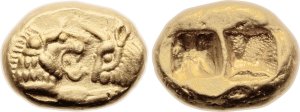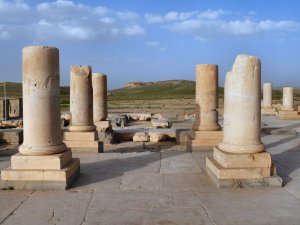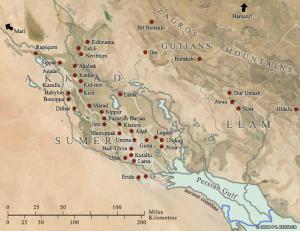The new episode is out. As usual, you can get it directly from here or subscribe to it from FeedBurner…
I owe everyone an apology. I have moved for the year from Europe to North America, and the move proved more overwhelming that I imagined. I had to arrange too many things, teach, and do much writing. I have everything under control now, and will be sticking to a real schedule henceforth.
As for the episode, it is full of weird names, so here is something to orient you (and here is a useful list of all Elamite rulers, real and fictional!):
Names:
Kidinu: founder of the first dynasty (Middle Elamite I: Kidinuids)
Tepti-Ahar: the Kidinuid king who founded the site of Haft Tepe (Kabnak) near Susa, where his tomb also is.
Igi-halki: the founder of the second dynasty (Middle Elamite II: the Igihalkids)
Untash-Napirisha: the most important king of the Igihalkids, a maternal grandson of Kurigalzu I of Babylonia (of the Kassite dynasty).
Kidin-Hutran III: the Igilhakid who removed Assyrian puppets from the Babylonian throne.
Tukulti-Nimurta: the Assyrian king who removed the legitimate line of Kassite kings; they were later restored
Shutruk-Nahhunte: the founder and greatest ruler of the Middle Elamite III dynasty, the Shutrukids. He conquered Babylonia and put and end to the rule of the Kassites.
Kutir-Nahhunte: son and successor of Shutruk-Nahhunte
Shilhak-Inshushinak: brother and successor of Kutir-Nahhunte and the last great king of the Shutrukids
Sites:
Susa: Shusha; the low-land capital of Elam
Anshan/Anzan: the highland capital of Elam
Haft Tepe/Kabnak: site east of Susa; tomb of Tepti-Ahar
Al-Untash-Napirisaha: the archaeological site of Chogha Zanbil, with its impressive Ziggurat; the religious and political centre of the Igilhakids, near Deh-e Now, their home town.
Nebuchadnezzar I: the fourth king of the Babylonian dynasty of the Sealand and the bane of the Shutrukids
Hutelutush-Inshushinak: the last of the Shutrukids; he escaped Nebuchadnezzar and took refuge in Anshan/Anzan; also reliefs at Kul-e Farah in Izeh.

Middle Elamite relief from Kul-e Farah (Izeh)

The Ziggurat of Chogha Zanbil

The aerial view of Chogha Zanbil/Al-Untash-Napirisha












